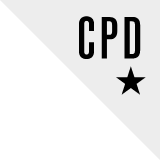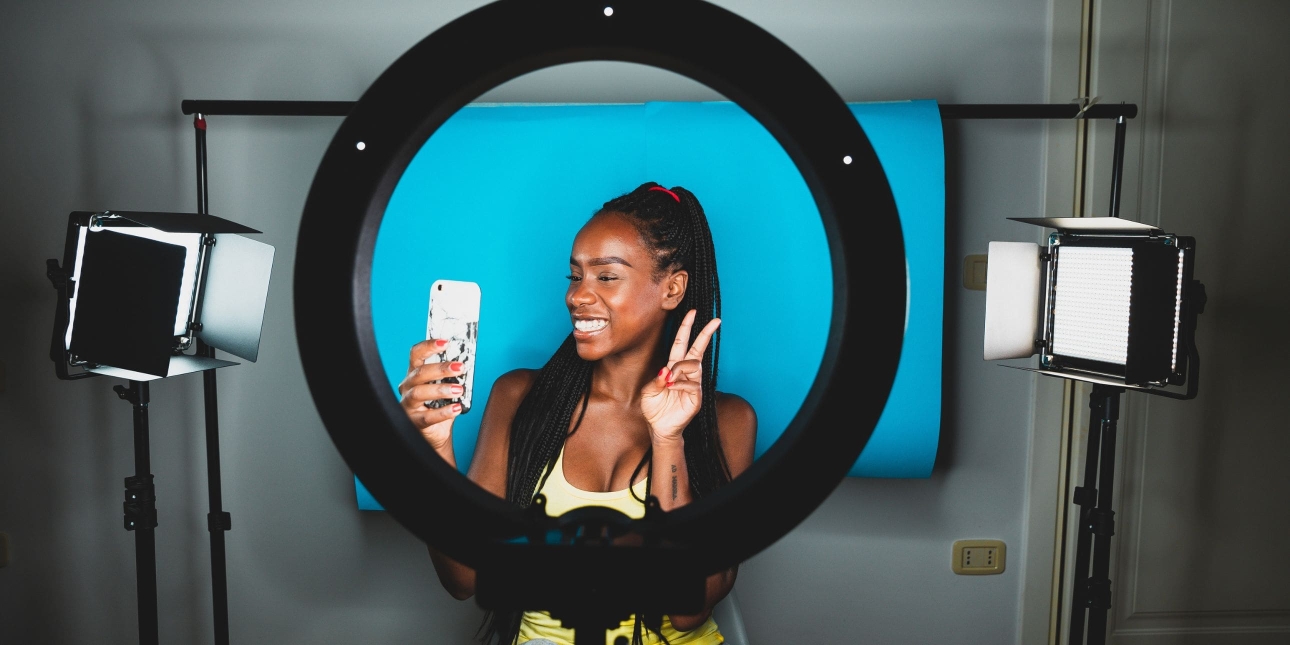Who’s more important – journalists or influencers?
Does print still have a point? Or should PRs be placing their bets with the ‘wild west’ creator economy instead?
The rapid rise of the creator economy has been difficult to ignore in 2024. It’s now worth $250bn (£192bn) according to Goldman Sachs, a figure set to double to $480bn (£369bn) within three years. The likes of MrBeast and Alex Cooper’s Call Her Daddy podcast command viewing figures and advertising that legacy media can only dream of. Meanwhile, influencer marketing agency Billion Dollar Boy is one of Europe’s fastest-growing companies; this summer another influencer marketing firm, Influential, was bought by the Publicis Groupe for $500m (£385m).
If PRs need any further proof of content creators’ ascendancy, they need only look at this year’s two big elections. Targeting micro-influencers on TikTok and Instagram was a key part of Labour’s election-winning strategy this summer (the party hired a dedicated creator outreach manager) while the White House even held a Creator Economy Conference in August, attended by President Biden.
“It is a struggle knowing who to engage with,” says Niki Hall, chief marketing officer at cloud software provider Five9. “Journalists from traditional media have insights and can shape market perception, but there are so few of them around because so much content is being produced by AI, influencers and other sources that weren’t around 25 years ago. These influencers and content creators might not have the authority, but they do have a reach.”
They’re also increasingly overtaking legacy media as the primary source of news and information for millions of younger people. Last year an international Reuters Institute report found 55% of TikTok/Snapchat users and 52% of Instagram get their news from personalities such as Dylan Page (aka ‘NewsDaddy’) and Matt Welland, rather than the mainstream media or journalists on these platforms.
For PRs/comms professionals, one of the biggest draws of working with this new media class is that many have built communities in specialist areas from scratch.
As a publicity model, having a micro-influencer feature your client’s product/service to their 900-or-so followers runs counter to the age-old notion that as many people as possible should read/hear about it. But an engaged community of die-hard fans may be more effective than targeting mainstream publications.
“People are craving community right now,” says Amie Kitainik, account manager at Birmingham-based marketing agency Digital Glue. “Imagine your client makes leaf-blowers. Most of your PR would be the gardening press, but you’ve still got to stand out among other products such as seedlings and lawnmowers within that publication. However, if you work with a content creator or Substacker who focuses on this niche, your return-on-investment will be much bigger.”
SOCIAL MEDIA IMPACT
Content creators can be particularly useful for PRs working in B2C. Because creators aren’t restricted by the parameters of traditional media such as page length, word counts, strict time slots or even the ad-blockers and paywalls of online media, it means they can showcase your client’s product in greater depth. It’s great for earned coverage too, with comments underneath the posts on social platforms helping sustain news about the brand even further.
Travel PRs are increasingly courting aviation influencers or websites such as The Points Guy, who cover their sumptuous first class cabins via compelling videos/content – which is more effective than a one-line ‘Flights provided by Virgin Atlantic’ blurb at the bottom of the article.
“For B2C, people want to see somebody using the product; they want to see it in somebody’s hands,” says Kitainik. “Digital Glue works with many photography brands. If I’m working on, say, monitor calibration devices, I’ll always include influencers in my PR strategy as people want to see somebody using it, displaying its features and benefits in real-time.”
Indeed, stats show that when a product goes viral online, it translates to real world sales. Facebook research shows 54% of people said they made a purchase after seeing a product or service on Instagram; it’s a similar figure (55%) for TikTok users.
Although people are increasingly discovering new products through social media, traditional media is still useful for more analytical and contextual coverage.
“Instagram is like the mood board for consumers,” says Kitainik. “If I’m planning a holiday, my journey tends to start on social media. Watching videos about Madeira for six months could help make up my mind to go there. But when I’m doing planning and research, that’s when I’ll go to traditional press outlets to drill down what part of the island I should stay on, and the logistics of how it’s going to work.”
CREDIBILITY BOOST
With the circulation of newspapers and consuming magazines continuing to fall (the ABC figure for the Daily Mail has shrunk from a 1.7m daily circulation in 2014 to 672,000 today), it might be easy to assume traditional media is becoming obsolete. Yet, they are still effective outlets for PR campaigns because readers are arguably more engaged.
“If you’ve bought a magazine or found an article online, you’re more likely to read it than scrolling through socials,” says Kitainik. "The app default for many social platforms is silent meaning many people never listen to the videos they’re watching; 2021 Sharethrough research shows 75% of people watch social media videos on mute. You can also scan a print article to find the info you’re looking for which you can’t always do with video.”
There’s also the propensity for people to swipe to the next video. “People very rarely watch an entire 90-second reel,” says Kitainik. “Usually within five seconds, they’ve made up their mind whether to watch it or not.”
If a newspaper mentions your client within a text-based article that’s been published online, it arguably has more durability and is better for SEO than a soundbite on a podcast or social media videos because it’ll continue to appear in Google searches (even AI-generated results). Meanwhile, traditional media still rules for corporate comms: placing stories about an IPO is much more likely to resonate with readers of the FT or Bloomberg.
There’s also an undeniable cachet to print, whether it’s luxury advertisers eager to flaunt their handbags and fragrances in magazines, or public figures (and their PRs) clamouring to be featured on the cover. Many PRs find print beneficial as it can help build media traction, give a stamp of validation from an authoritative brand, plus potentially cast subjects in a new light (the likes of Victoria Beckham and Justin Bieber have seen their credibility soar after edgy photoshoots in magazines such as W and i-D).
“There’s a credibility offered with publications and journalists that is unmatched,” says Kitainik. “If you see a service promoted ‘As seen in the Sunday Times’ or ‘As featured in Digital Camera World', you’re going to think it’s worth checking out. Unless it’s MrBeast or Maya Jama, ‘As seen featured by an ex-influencer’ doesn’t carry the same weight… If you visit a client’s offices, they’ll have their press cuttings blown up on the walls, but not mentions from influencers.”
HOLISTIC APPROACH
Indeed, the ‘About us’ page of Billion Dollar Boy’s website proudly mentions “Read more about our history in The Times or the Evening Standard”, hyperlinking to both articles.
Specific sectors are often hungrier to be featured in traditional media because they believe it offers more prestige than social media, adds Kitainik. “If you’ve got a sciences/health tech client, socials won’t have much sway with the C-suite. But a mention in a publication or peer review will really sing for them.”
However, deciding whether to engage traditional media or social media is a tug-of-war many PRs continue to struggle with.
Kitainik suggests adopting a holistic, 360-approach for campaigns – a strategy increasingly used by many agencies, who are dispensing with their social-first or PR-first modus operandi. This summer marketing agency TMW Unlimited merged its social, influencer and PR divisions (Fever PR) into a new organisation: TMW Tomorrow, which develops integrated campaigns for its clients such as Canon, Logitech and Sky.
“If your campaign for a product launch features a video from a content creator demonstrating why it’s amazing, along with a trusted publication detailing the technical knowledge, then that’s a very powerful campaign,” says Kitainik. “There’s so much content creators can do, which traditional press can’t, and vice versa... I wouldn’t see them as two different things.”
“Influencers right now can’t offer the credibility of traditional media but do provide the illusion of authenticity and a real hands-on approach. It’s a shared power balance. Team up! It’s much better to work with both than against each other!”

Christian Koch is an award-winning journalist, editor, content strategist and brand consultant.
The CIPR content management training course
The next two-day content management course takes place on 12 November online with more dates in 2025. This practical course explores the PESO model and how to integrate content marketing with your PR programmes. Find out more about the content management course.


